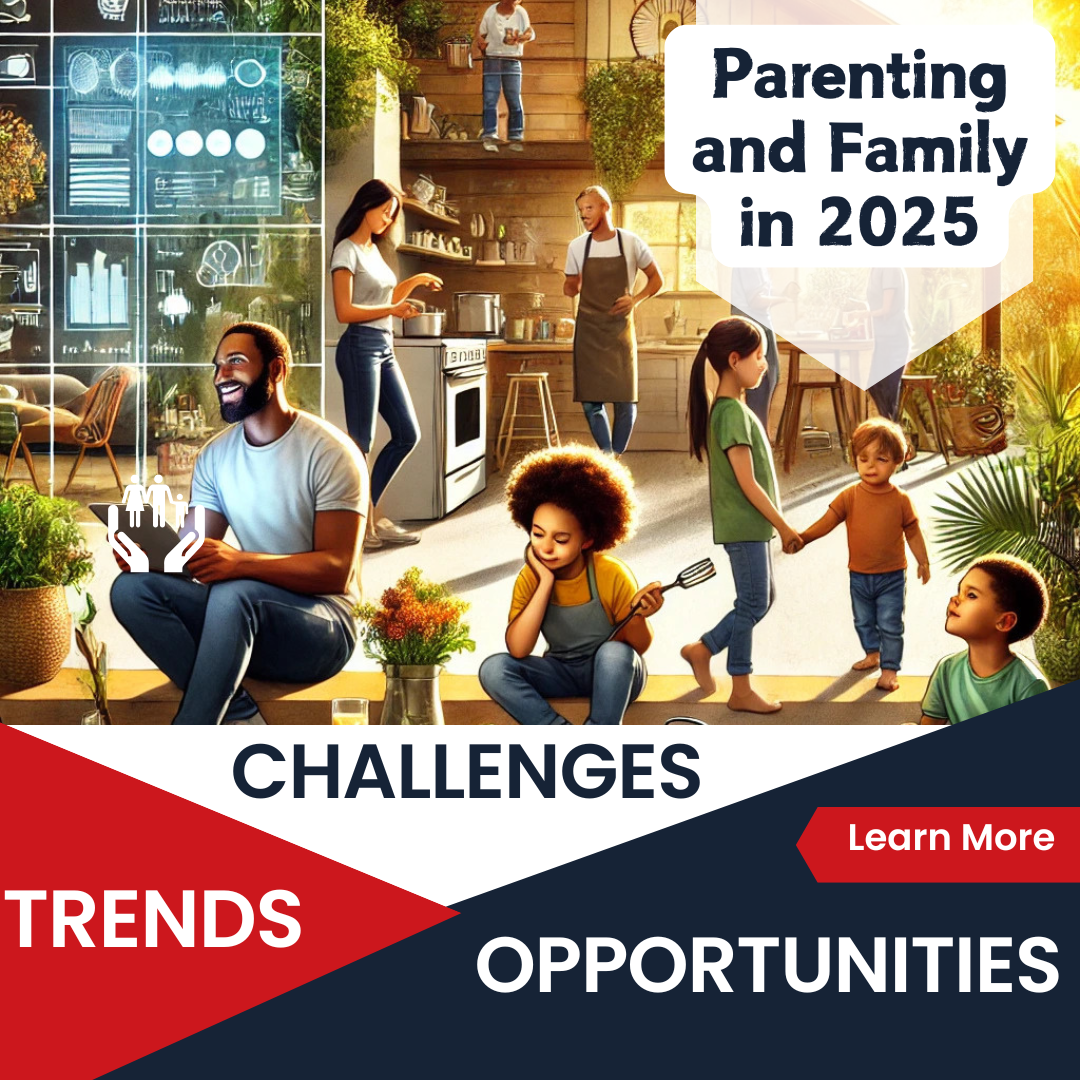
Parenting and family life continue to change, driven by shifts in culture, rapid advancements in technology, and evolving societal norms. In 2025, American families face unique challenges and opportunities that shape how they raise children and maintain strong family bonds. This article explores the key trends, backed by facts and statistics, to provide a comprehensive overview of modern parenting and family life.
The Evolving Structure of American Families
While the traditional nuclear family remains prevalent, there has been a notable increase in diverse family structures across the United States. According to the U.S. Census Bureau, 19% of children in 2023 lived with single parents, while 15% lived with blended families or stepparents. Additionally, same-sex couple households have risen, with an estimated 1.2 million families in the U.S. identifying as such.
Key Statistic:
The Pew Research Center reports that 46% of children in the U.S. under 18 now live in families with two married parents in their first marriage, compared to 73% in 1960. (Source)
Technology’s Role in Parenting
Modern parents find technology to be a double-edged sword, offering both valuable tools and significant challenges. In 2025, 95% of American teens own a smartphone, according to a report by Common Sense Media. This digital access provides opportunities for education and connection but also poses risks like screen addiction and exposure to harmful content.
Parenting Tips for Tech Use:
Set Screen Time Limits: The American Academy of Pediatrics recommends no more than 2 hours of recreational screen time per day for children aged 6 and older.
Monitor Content: Use parental controls and regularly discuss online safety with your children.
Model Healthy Behavior: Parents should demonstrate balanced tech usage to set an example.
Work-Life Balance for Parents
Remote work has grown substantially, with Gallup reporting that 27% of American employees now work exclusively from home. While this flexibility benefits parents by allowing more time with children, it also blurs the lines between work and family life, leading to potential stress.
Strategies for Balance:
Create Boundaries: Establish specific work hours and a dedicated workspace.
Prioritize Quality Time: Schedule regular family activities to ensure meaningful connections.
Seek Support: Use community resources, such as childcare cooperatives or family-friendly workplaces, to alleviate pressure.
Mental Health Awareness in Families
Discussions surrounding mental health have become more prominent, with the CDC noting that 1 in 5 American children faces a diagnosable mental health condition. In response, more families are prioritizing open communication and seeking professional support.
Statistics:
Therapy usage among children aged 12-17 increased by 15% between 2020 and 2024. (Source)
73% of parents believe mental health education should be a part of school curriculums. (Source)
The Importance of Family Traditions
Family traditions remain a cornerstone of bonding and identity. In 2025, many families are adapting traditions to include diverse cultural practices and sustainability-focused celebrations, reflecting changing societal values.
Ideas for Modern Traditions:
Eco-Friendly Holidays: Incorporate reusable decorations and plant-based meals.
Cultural Exchange Nights: Explore global cuisines and traditions together.
Volunteer Together: Participate in community service as a family to foster empathy and teamwork.
Conclusion
Parenting and family life in 2025 are marked by both challenges and opportunities. By leveraging technology responsibly, fostering mental health awareness, maintaining traditions, and balancing work and home life, American families can navigate this dynamic landscape successfully. Embracing these strategies ensures a supportive environment where children can thrive.
For more information and resources, visit:
Pew Research Center
American Academy of Pediatrics
CDC – Mental Health
National Alliance on Mental Illness (NAMI)
